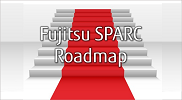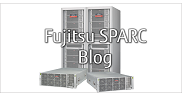Archived content
NOTE: this is an archived page and the content is likely to be out of date.
FUJITEC selected Fujitsu M10 for their new integrated database platform
"Implementing Fujitsu M10 as an integrated database for our mission-critical system ensures we can keep running costs low, deliver better business continuity and achieve 17 times the performance of our previous system."
Mr. Yoshitaka Koanji, Assistant Manager, Information System Department, Corporate Planning HQ
The customer
FUJITEC was founded in 1948 and is a leading company in people moving systems including elevators, escalators, and moving walkways. FUJITEC also manufactures a number of unique products such as the Door-Edge Sensor which uses a laser to detect thin objects (e.g. string, leash or cord) that maybe stuck in the elevator doors and thereby increase elevator safety. In the 1960s, FUJITEC expanded overseas before the rest of the industry under the philosophy of "Co-existence and Co-prosperity", developing their business in 20 countries around the world, particularly across Asia, North and South America, and the Middle East.
Currently, 60% of FUJITEC's gross sales are from overseas business. In their mid-term management plan titled "Grow Together! Yes, Fujitec Can" (FY 2013 - FY 2015), the basic policy describes further raising the presence of FUJITEC in the global market as well as exceeding customers' expectations, and standards for reliability, through a priority on safety and quality. ICT plays a vital role in FUJITEC's continued global success and growth.
The challenge
FUJITEC wanted to increase the speed of their mission-critical system's integrated database in order to support an increase in data from big data utilization and system integration. They recognized this would improve the availability of the integrated database, which was an important factor in advancing global operations. During this process to improve performance, as well as disaster recovery measures, it was also vital for FUJITEC to minimize the system's running costs.
"In order to support the expansion of our overseas business, we needed to construct a system that could regulate our corporate resources and optimize our ICT infrastructure from a global perspective. In conjunction with this activity, to improve our corporate competitiveness, we revolutionized the way we worked using mobile devices to improve individual productivity. As a result, the Information System Department must now fulfill the role of leading this work style change through ICT. As one of our fundamental objectives we constantly strive for improvements in the QCD (Quality, Cost and Delivery) of our ICT environment," said Mr. Kenji Tomooka, Chief Information Officer, Information System Department, Corporate Planning HQ, Fujitec Co., Ltd..
At the end of 2012, when modernizing the integrated database supporting the mission-critical system, FUJITEC began a construction project that would deliver the next version of their system. During this, they identified that the infrastructure construction needed to consider future business implications.
FUJITEC's mission-critical system managed everything from ordering to design, production, procurement, logistics, and after-service. Mr. Yoshitaka Koanji, Assistant Manager, Information System Department, Corporate Planning HQ, Fujitec Co., Ltd., describes the requirements for the new integrated database that will support their mission-critical enterprise system.
"Following expansion of our global business, the need increased for stable, 24-hours-a-day, 365-days-a-year operation of the integrated database that handled our core tasks. There was also a strong need to improve our disaster recovery measures; specifically reduce recovery time should the system stop during a disaster. This was due to the risks that could arise if issues with the integrated database spread globally."
Improving performance to handle an increase in data was also an important challenge. "We were reconstructing our large-scale mission-critical database, and needed to consider integration for databases dispersed by workload. Furthermore, with the application of big data becoming a key priority for the business, it became absolutely necessary to improve processing performance." (Mr. Koanji)
The solution
By combining Fujitsu M10 with Flash Accelerator F40 card, FUJITEC successfully increased performance to 17 times that of the existing system. This solution was now able to support high-speed processing for big data, necessary for their future business, and based on the mainframe-class reliability of Fujitsu M10; provide a safe and secure environment. In the event of a disaster, system recovery time was also significantly reduced by creating a disaster recovery site using Fujitsu M10 and Oracle Data Guard. While the number of CPU cores was kept low by improving the database system's I/O function with the flash card, and by effectively using the standby server via the Fujitsu M10 virtualization function. This allowed software license costs to be optimized. In the end, FUJITEC was able to successfully address all necessary system requirements without increasing operational running costs.
In selecting a server for the new integrated database, it needed to not only meet a number of key requirements, but also reduce current running costs. "It was necessary to increase the I/O response speed and significantly increase the performance of the whole system without increasing the number of cores. This was achieved using the Fujitsu M10's high performance processor together with a Flash Accelerator F40 card. By keeping the same number of CPU cores, we were able to reduce running costs without adding any software licenses. Fujitsu's proposal had a different approach from other companies and reflected excellent cost performance," said Mr. Koanji. Another important factor in the decision was Fujitsu M10's virtualization function, which ensured the disaster recovery server could also be effectively used as a development server in the case of a disaster.
FUJITEC was particularly impressed with Fujitsu's proposal due to its high technical prowess and ability to address their needs for high mainframe class reliability. As a result FUJITEC decided to implement Fujitsu M10 in October 2013. "The trust we had in Fujitsu was based on previous successful results. This included the detailed support received from Fujitsu Systems West during the construction of the infrastructure and maintenance system which features a support desk for our existing system (SPARC Enterprise M4000)." (Mr. Koanji)
The new integrated database, implemented on the Fujitsu M10-4 infrastructure, offers high reliability and high performance, and leverages a Flash Accelerator F40 card for storage. By placing the database on a flash disk in the server, the I/O performance could be significantly enhanced. In addition, business continuity was also improved by installing Fujitsu M10-1 as the disaster-recovery server and by using Oracle Active Data Guard for automatic database synchronization. The disaster-recovery Fujitsu M10-1 can, in the event of an emergency, decrease the development server resources, which are assigned using the virtualization function "Oracle Solaris Zone," and can increase the resources of the standby machines.
During construction of the new integrated database there was a strong focus on ensuring the switch over to the new system went smoothly. "To ensure daily operations were not impacted, changeover between the servers was rehearsed until we felt absolutely convinced. With support from Fujitsu Systems West, we quickly identified any issues and resolved them one by one. This detailed preparation allowed us to complete changeover in a single day, as planned." (Mr. Koanji)

The benefit
- Significantly improved database's processing performance
- Increased response rate by 17 times that of the previous system by combining Fujitsu M10's high performance processor with the Flash Accelerator F40 card
- Quicker searches leading to an increase in productivity, providing ability for big data processing
- Reduction in time required to switch between the operating system and the standby system from 60 to only 15 minutes
- Minimal impact to daily operations regardless of disaster recovery training
Download
Read the full FUJITEC CO., LTD. case study (163 KB/A4, 3 pages)





